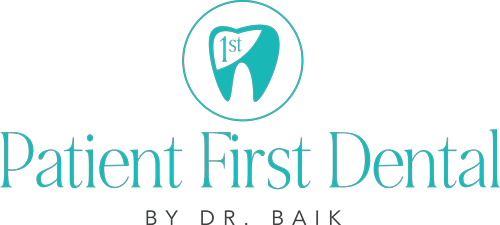How Gum Disease is Treated

Start with a deep cleaning
The first step in treating gum disease is to remove the source of the problem. The condition typically forms due to a buildup of plaque and tartar on the teeth, underneath the gum line. This area is impossible to clean at home. If a patient does not have regular dental appointments, it is more likely that gum disease will form.
A deep cleaning goes further than a traditional dental cleaning. To reach this area of the teeth, a dentist will either need to pull the gum tissue away from the teeth and use a scalpel to scrape away the plaque and tartar. Some dentists may use dental lasers to break it up. A deep cleaning may sometimes be broken up into multiple sessions to help a patient with concerns about dental anxiety.
Remain calm during the procedure
When the deep cleaning involves traditional dental tools, a patient is going to take sedation medication to help remain relaxed. When it revolves lasers, sedation may not be necessary. Once the cleaning is complete, patients may experience some general discomfort. However, the discomfort will dissipate quickly and the gums will begin to heal.
A deep cleaning is generally necessary when the gums are swollen, sensitive and experiencing some bleeding. If the gums begin to recede, additional treatments may be necessary.
Restoring the gum tissue
To complete the process of treating gum disease, we need to restore the gum tissue. If the gums recede, pockets form or they pull away from the tooth structure, a gum graft may be necessary. This is where we may suture additional tissue to the gums and then secure it around the teeth. There are multiple ways to approach this. Some dentists will use a scalpel and sutures while others rely on laser technology or alternative treatments.
The end result is the same. Gum tissue is restored and as it is, the teeth become protected and secure once more. The recovery process is going to vary on the extent of the damage to the gum tissue and how we perform the gum graft. In general, patients may experience some sensitivity and discomfort for a brief time before the gums will begin to feel better.
Treating gum disease is important
It is critical that patients treat gum disease as soon as possible. This can prevent the disease from advancing and reaching the point where something like a gum graft becomes necessary. It is far better to treat it when a deep cleaning is all that is required to restore the health of the gum tissue.
We recommend calling our dental office and scheduling an appointment if gums have become sensitive, teeth are beginning to appear longer than normal or the gum tissue is swelling and bleeding.
[recent-blogs count=4 layout=”horizontal” category=”gum-disease-cat,i-think-my-gums-are-receding-cat,why-are-my-gums-bleeding-cat,gum-contouring-and-reshaping-cat,laser-dentistry-cat,oral-cancer-screening-cat,preventative-dental-care-cat”]


